What biological objects can colonize the monument surfase?
It is well known that surface of many historical monuments can be colonized by different biological objects such as lichens, bacteria, fungi, moss and seed plants. They change the monument surface state by biofouling processes. They also form the complicated and specific lithobiotic communities which can be reason of the monument destruction. The diversity and abundance of lithobiotic organisms depend on the structure and chemistry of the rock substrate as well as exposed and climate conditions. We need to know about these organisms much more than we have now. The organisms which can colonized the rock surface can be divided into the following groups.
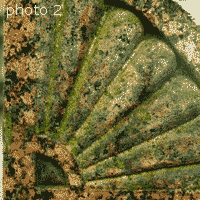
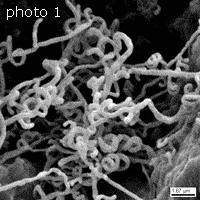
1). Chemolithoautotrophic bacteria use inorganic compounds (e.g., ammonia, nitrites, hydrogen sulfide, thiosulfates or elementary sulfur) to obtain energy from their oxidation and fix CO2 from the atmosphere. They can produce the nitrous acid, nitric acid and sulfuric acid.
2). Chemoorganotrophic bacteria use organic substrates as energy source. They play important role in the substrate transformation processes. Actinomycetes are more dangerous agents of biodestruction processes on the rock monuments (photo 1).
3). Photolithoautotrophic microorganisms such as algae (photo 2) and cyanobacteria use sunlight as energy source and release oxygen during photosynthesis. They get necessary carbon by fixing CO2 from the atmosphere. Usually they are the first colonizers of the rock substrates because they are independent from the organic substrates as energy source. They can produce the different metabolism products which can be used by the other members of lithobiotic communities.
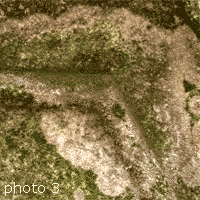
4). Lichens are a symbiotic association between a fungus and an alga or cyanobacteria. The role of fungus is utilization of organic matters produced by the algae through photosynthesis. The algae get the water and minerals because the fungal activity. The fungus also protects the alga from unfavorable environmental conditions. Lichens are the strong agents of rock monuments biodeterioration (photo 3). They influence on the rock by physical and chemical ways. Also they accumulate water on the rock surface and contribute to development of lithobiotic communities.
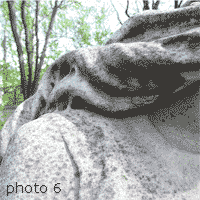
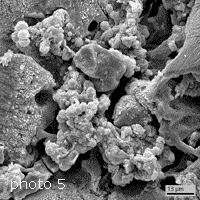
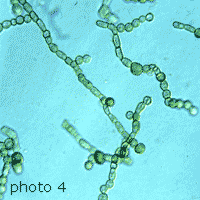
5)The microscopic fungi – micromycetes (photo 4-5) use the different organic substance for the growth and development oh the rock surface. They commonly release complexing biocorrosive organic acids which are the reason of corrosion processes on the superficial rock level. Also micromycetes capable to physical attack of the rock and can penetrate to the cracks and fissures on the rock surface. Micromycetes can be intensively developed in the wet and foul environment. Usually they colonize the rock surface together with chemoorganotrophic bacteria, lichens and photolithoautotrophic microorganisms and form the superficial (subaeral) biofilm which can be different colored (photo6).
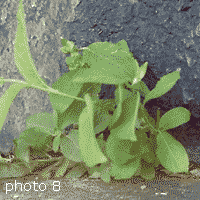
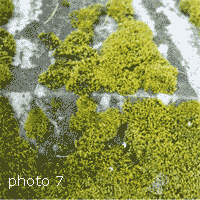
6). Moss (photo 7) and seed plants (photo 8) have appeared on the rock monument surface on the latest stage of biological colonization.
They are the centers of water and organic substances concentration on the rock surface. Their development strong increase the destruction processes. The plant roots can penetrate by the cracks and fissures on the considerable depth and contribute to water and aggressive matter migration into the rock substrate.
